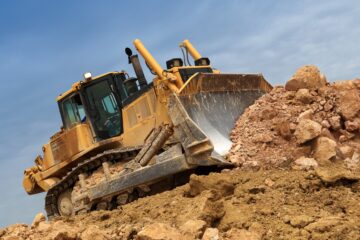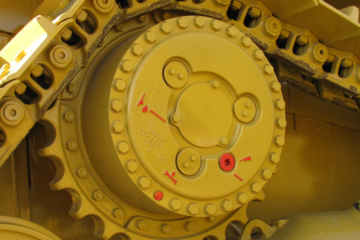
Increasing return on your undercarriage requires implementing and then maintaining certain basic steps as part of the normal business process. These steps require discipline but are simple to implement.
- Regular Track Inspections
Undercarriage inspections should be performed regularly to measure components, calculate the amount of wear on each component, take images and observe the condition of the components. This inspection data should be compared with previous inspection data to determine the rates of wear and to plan any actions required to ensure components are achieving maximum life. Dozers should be inspected at least every 500 hours while excavators every 2000 hours
- Identifying problems causing excessive wear rates
Successive inspections enable identification of increased component wear rates and the actions required to bring the wear rates back in line with average, whether it’s failed track components, operator skill or any of the myriad causes of increased wear rates.
- Matching components and actions to gain as close to 100% life
Regular undercarriage inspections over the life of an equipment allow repairs to be identified to enable all components in the undercarriage system to get as close to 100% worn. Any component not achieving 100% worn effectively means money is being left on the table resulting in a higher cost per hour.
- Monitor Track Tension
Tight tracks are the single cause of accelerated wear of undercarriage components and if not identified early will reduce the life of the undercarriage. It is the first point of inspection in any undercarriage inspection.
Tracked machines that are inspected regularly achieve on average between 85 and 100% of achievable life while those that are not inspected achieve at most, 65 to 70% of achievable life!
TrackTreads Undercarriage and Inspection Management provides the tools to measure and manage any brand of tracked machine whether a dozer, Excavator, Hydraulic Mining Shovel or Electric Rope Shovel.



0 Comments